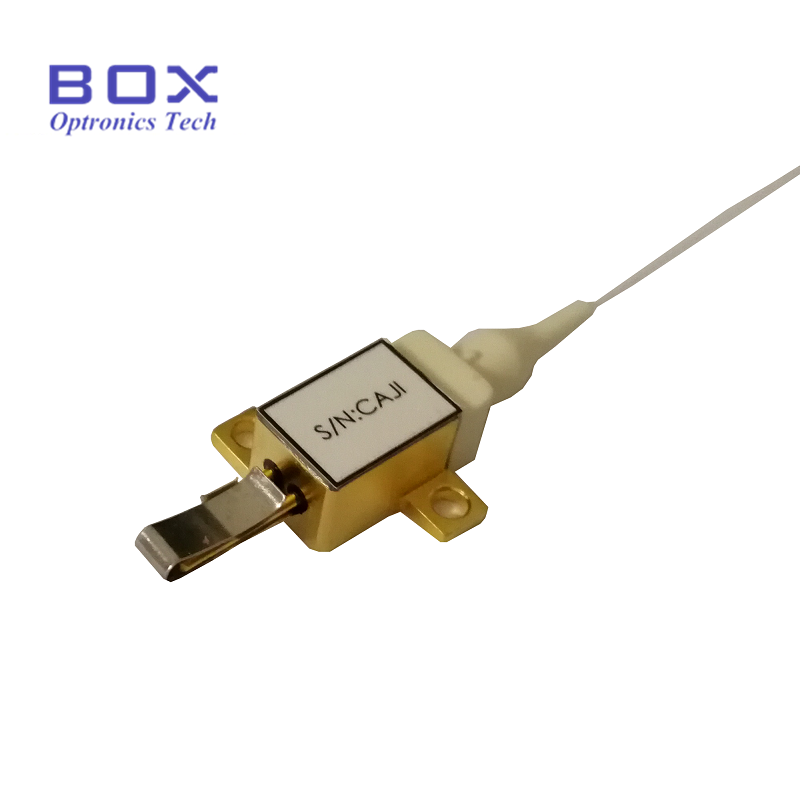

Fiber laser refers to a laser that uses rare-earth-doped glass fiber as the gain medium. Fiber laser can be developed on the basis of fiber amplifier: high power density is easily formed in the fiber under the action of pump light, resulting in laser The laser energy level of the working substance is "number inversion", and when a positive feedback loop (to form a resonant cavity) is properly added, the laser oscillation output can be formed.
According to the types of fiber materials, fiber lasers can be divided into:
1. Crystal fiber laser. The working material is laser crystal fiber, mainly ruby single crystal fiber laser and nd3+: YAG single crystal fiber laser.
2. Non-linear optical fiber laser. There are mainly stimulated Raman scattering fiber lasers and stimulated Brillouin scattering fiber lasers.
3. Rare earth doped fiber lasers. The matrix material of the optical fiber is glass, and the optical fiber is doped with rare earth element ions to activate it to make a fiber laser.
4. Plastic fiber laser. Doping laser dye into the core or cladding of the plastic optical fiber to make a fiber laser.
Classified by gain medium:
a) Crystal fiber laser. The working material is laser crystal fiber, mainly ruby single crystal fiber laser and Nd3+:YAG single crystal fiber laser.
b) Non-linear optical fiber laser. There are mainly stimulated Raman scattering fiber lasers and stimulated Brillouin scattering fiber lasers.
c) Rare earth doped fiber lasers. Doping rare earth element ions into the fiber to activate it (Nd3+, Er3+, Yb3+, Tm3+, etc., the matrix can be quartz glass, zirconium fluoride glass, single crystal) to make a fiber laser.
d) Plastic fiber laser. Doping laser dye into the core or cladding of the plastic optical fiber to make a fiber laser.
(2) According to the structure of the resonant cavity, it is classified into F-P cavity, ring cavity, loop reflector fiber resonator and "8" shape cavity, DBR fiber laser, DFB fiber laser, etc.
(3) According to the fiber structure, it is classified into single-clad fiber lasers, double-clad fiber lasers, photonic crystal fiber lasers, and special fiber lasers.
(4) According to the output laser characteristics, it is classified into continuous fiber lasers and pulsed fiber lasers. Pulsed fiber lasers can be further divided into Q-switched fiber lasers (pulse width of the order of ns) and mode-locked fiber lasers (pulse width It is of the order of ps or fs).
(5) According to the number of laser output wavelengths, it can be divided into single-wavelength fiber lasers and multi-wavelength fiber lasers.
(6) According to the tunable characteristics of the laser output wavelength, it can be divided into tunable single-wavelength lasers and tunable multi-wavelength lasers.
(7) According to the wavelength band of laser output wavelength, it is classified into S-band (1460~1530 nm), C-band (1530~1565 nm), L-band (1565~1610 nm).
(8) According to whether it is mode-locked, it can be divided into: continuous light laser and mode-locked laser. Common multi-wavelength lasers are continuous-wave lasers.
According to the mode-locked devices, it can be divided into passive mode-locked lasers and active mode-locked lasers.
Among them, passive mode-locked lasers have:
Equivalent/false saturable absorber: Non-linear rotating mode-locked laser (8-shaped, NOLM and NPR)
True saturable absorber: SESAM or nanomaterials (carbon nanotubes, graphene, topological insulators, etc.).
Copyright @ 2020 Shenzhen Box Optronics Technology Co., Ltd. - China Fiber Optic Modules, Fiber Coupled Lasers Manufacturers, Laser Components Suppliers All Rights Reserved.